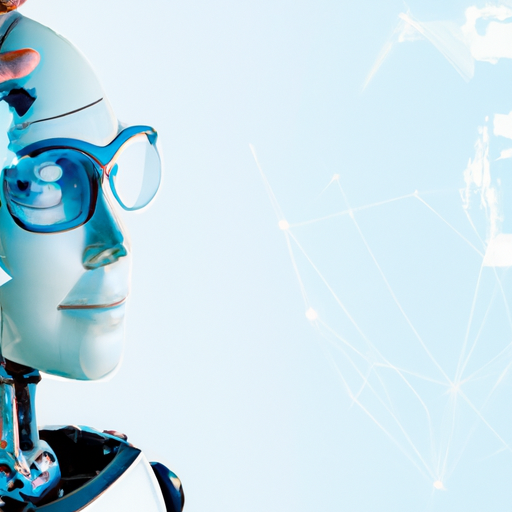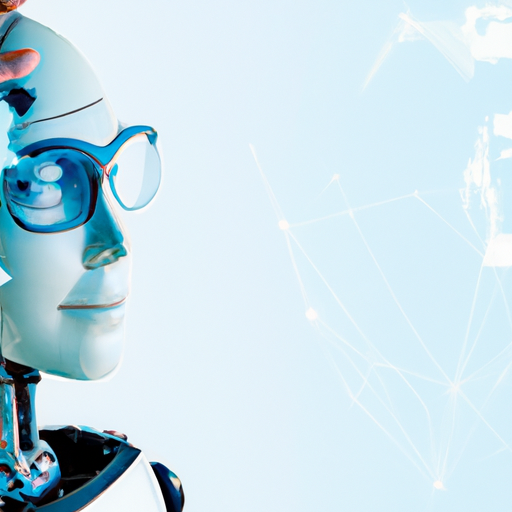Today we will explore the intriguing question: Is AI the same as robotics? While these two terms are often used interchangeably, there are subtle differences that set them apart. AI, or Artificial Intelligence, refers to the ability of machines to simulate human intelligence and perform tasks that typically require human intelligence. On the other hand, robotics involves the physical embodiment of machines that can interact with their environment through sensors and actuators. Join us as we dive into the world of AI and robotics to uncover the similarities and distinctions between these fascinating fields. AI and robotics are two distinct fields, but they are often interconnected and commonly associated with each other due to their shared goal of creating intelligent systems. While both AI and robotics involve the development of intelligent machines, they differ in their function, scope, and approach to problem-solving.
What is AI?
Artificial Intelligence (AI) refers to the simulation of human intelligence in machines that are programmed to think, reason, and learn like humans. It encompasses a wide range of technologies, algorithms, and methodologies that enable machines to perform tasks that typically require human intelligence. AI systems are designed to analyze data, recognize patterns, make decisions, and solve complex problems.
What is Robotics?
Robotics, on the other hand, is a field that focuses on the design, construction, and operation of physical robots. It involves the integration of AI technologies and combines mechanical, electrical, and computer engineering to create machines that can perform physical tasks autonomously or with minimal human intervention. Robotics aims to develop machines that can interact with their environment, manipulate objects, and execute specific actions.
Key Differences between AI and Robotics
Function and Scope
The primary difference between AI and robotics lies in their intended function and scope. AI is concerned with the development of intelligent algorithms and systems that can process and analyze large amounts of data to mimic human reasoning and decision-making. On the other hand, robotics focuses on the physical embodiment of intelligent systems and the creation of machines that can interact with the physical world and perform tasks.
Nature of Intelligence
Another notable difference is the nature of intelligence involved in AI and robotics. AI focuses on replicating human cognitive abilities, such as perception, learning, problem-solving, and decision-making. It aims to develop algorithms and models that can understand, interpret, and respond to complex information. In contrast, robotics aims to replicate physical actions and movement, integrating AI to enable robots to interact and navigate their environment effectively.
Interactions with the Environment
While AI systems primarily interact with virtual or simulated environments, robotics involves physical interactions with the real world. AI algorithms analyze and process data from various sources, such as text, images, and videos, to derive insights or make predictions. In contrast, robots in the field of robotics use sensors, actuators, and control systems to perceive their surroundings, manipulate objects, and carry out tasks in the physical world.
AI and Robotics: Different Fields, Related Concepts
AI in Robotics
AI plays a significant role in the advancement of robotics. By integrating AI algorithms and techniques into robotic systems, robotics researchers can enhance the autonomy, adaptability, and decision-making capabilities of robots. AI enables robots to perceive, interpret, and respond to their surroundings, making them more independent and capable of carrying out complex tasks. This integration allows robots to adapt to changing environments, learn from their experiences, and operate effectively with minimal human intervention.
Robotics in AI
Robotics is often utilized as a practical application of AI techniques and algorithms. By using physical robots as testbeds, AI researchers can validate the effectiveness of AI models and algorithms in the real world. Robotics provides a platform for AI researchers to experiment and refine their systems, enabling them to develop more robust and capable AI algorithms. The challenges and complexities of building physical robots drive advancements in AI, pushing the boundaries of what AI systems can achieve.

Domains of AI and Robotics
AI Domains
AI encompasses several domains that focus on specific areas of human intelligence replication and problem-solving. These domains include natural language processing, computer vision, machine learning, expert systems, and knowledge representation. Natural language processing involves enabling machines to understand and communicate in natural human language, facilitating human-computer interactions. Computer vision focuses on enabling machines to perceive visual information from images or videos and extract meaningful insights. Machine learning is a branch of AI that involves developing algorithms to enable machines to learn from data and improve their performance over time. Expert systems aim to capture and replicate the knowledge and expertise of human experts in specific domains, enabling machines to make informed decisions. Knowledge representation involves developing models and techniques to represent and organize knowledge in a machine-readable format.
Robotics Domains
Robotics encompasses diverse domains that cover different aspects of physical interaction and control. These domains include industrial robotics, medical robotics, service robotics, humanoid robotics, and autonomous vehicles. Industrial robotics focuses on the automation of industrial processes, utilizing robots in manufacturing and production lines to enhance efficiency and productivity. Medical robotics involves the integration of robots in surgical procedures, rehabilitation, and healthcare, aiming to improve accuracy, precision, and patient outcomes. Service robotics focuses on developing robots for domestic tasks, such as cleaning, cooking, and companionship. Humanoid robotics aims to replicate human-like physical attributes and behavior in robots, enabling them to interact and communicate with humans in a more natural manner. Autonomous vehicles involve the development of self-driving cars and unmanned aerial vehicles (UAVs) that can navigate and operate without human intervention.
Technological Applications of AI and Robotics
AI Applications
AI has made significant advancements in various domains and has found numerous applications across industries. In the healthcare sector, AI is used for medical diagnosis, drug discovery, and personalized healthcare. AI-powered virtual assistants and chatbots have transformed customer service and support functions, providing immediate assistance and enhancing user experiences. AI algorithms are utilized in financial services for fraud detection, risk assessment, and algorithmic trading. In the transportation sector, AI is applied in autonomous vehicles, traffic management, and logistics optimization. AI has also revolutionized the field of entertainment and gaming, enabling realistic simulations, adaptive gameplay, and virtual reality experiences.
Robotics Applications
Robotics has a wide range of practical applications across industries and domains. In manufacturing, robots automate repetitive and hazardous tasks, improving efficiency, accuracy, and worker safety. In healthcare, robots assist in surgical procedures, rehabilitation, and physical therapy, enhancing precision and patient care. Service robots are used in various settings such as hotels, airports, and households, performing tasks like cleaning, delivery, and assistance. Robotics is also utilized in agriculture for tasks like autonomous farming, crop monitoring, and harvesting. In addition, robots are employed in exploration and search-and-rescue missions, as well as in hazardous environments like nuclear facilities and underwater operations.

Efficiency and Effectiveness in Different Contexts
AI Efficiency and Effectiveness
AI technologies offer enhanced efficiency and effectiveness in various contexts. AI algorithms can analyze large volumes of data within seconds, enabling faster and more accurate decision-making. In industries like finance and trading, AI-driven algorithms can monitor and process vast amounts of data in real-time to detect patterns and execute trades with precision. AI-powered recommendation systems in e-commerce platforms offer personalized product suggestions, improving customer satisfaction and boosting sales. In healthcare, AI algorithms can analyze medical images and patient data, assisting in early diagnosis and treatment planning. AI also improves efficiency in transportation and logistics by optimizing route planning, reducing fuel consumption, and minimizing delivery times.
Robotics Efficiency and Effectiveness
Robotics contributes to efficiency and effectiveness by automating physical tasks and reducing human effort. In manufacturing, robots can perform repetitive tasks with high precision and speed, resulting in increased productivity and reduced error rates. Robots in healthcare settings can provide consistent and accurate assistance in surgeries and rehabilitation, minimizing the risk of human error. In agriculture, robots can automate labor-intensive tasks like planting, harvesting, and monitoring crops, optimizing yield and reducing manual labor costs. In warehouses and logistics, robots can efficiently sort, pick, and pack items, enabling faster order fulfillment and reducing human effort. Furthermore, robots in search-and-rescue operations can navigate hazardous environments and locate survivors more quickly and safely than humans.
Collaboration of AI and Robotics
Collaborative Potential
The collaboration between AI and robotics holds immense potential for advancing the capabilities of intelligent systems. By combining AI algorithms with robotic hardware, researchers can create more capable, adaptable, and intelligent robots. AI enables robots to learn and adapt to changing environments, improve their performance over time, and make autonomous decisions based on complex data. Robotics, on the other hand, provides a physical platform for AI algorithms to interact with the real world, enabling robots to understand and manipulate objects, navigate environments, and carry out physical tasks. The collaboration between AI and robotics allows for the development of intelligent systems that can learn, reason, and act in the physical world.
Synergies and Integration
The integration of AI and robotics leads to synergistic effects, where the combined capabilities of both fields amplify the individual strengths of each. AI algorithms can enhance the perception, decision-making, and adaptive capabilities of robots. Machine learning algorithms can enable robots to learn from data and improve their performance in specific tasks. Computer vision algorithms can enhance a robot’s ability to perceive and interpret visual information. Natural language processing algorithms can allow robots to understand and respond to human commands and queries. By integrating AI and robotics, researchers can create intelligent machines that can perceive, reason, and interact with humans and their environment in a more natural and intuitive manner.

Limitations and Challenges in AI and Robotics
AI Limitations and Challenges
Despite the significant advancements in AI, there are still limitations and challenges that researchers face. One challenge is the lack of explainability and transparency in AI algorithms, making it difficult to trust or understand their decisions. Ethical considerations, such as biases in data and algorithms, raise concerns about fairness and accountability. The significant computing power required for training AI models can be a barrier to widespread adoption. Furthermore, the potential impact on jobs and the workforce raises questions about the societal implications of AI. Addressing these limitations and challenges is crucial for the responsible development and deployment of AI technologies.
Robotics Limitations and Challenges
The field of robotics also faces its own set of limitations and challenges. One limitation is the complexity of reproducing human-like physical behaviors and motions accurately. Developing robots that can interact with dynamic and unstructured environments in a robust and reliable manner remains a challenge. The cost of robotics technology and the need for specialized expertise in design and programming can be a barrier to adoption. The integration of AI algorithms into robotic systems requires careful consideration of safety, ethics, and legal implications. Ensuring the accountability, safety, and security of robots in various applications is an ongoing challenge that must be addressed.
Ethical Considerations in AI and Robotics
AI Ethics
As AI technologies advance, ethical considerations become increasingly important. One ethical consideration is ensuring the fairness and transparency of AI algorithms, as biased data or biased algorithms can lead to discriminatory outcomes. Privacy concerns arise when AI systems analyze and process personal data, which should be protected and used responsibly. The potential impact on employment and job displacement raises ethical questions regarding the responsibility of organizations and policymakers in ensuring a just transition. The development and deployment of AI also raise questions about accountability and liability in the case of system failures or unintended consequences. Ethical frameworks, regulations, and guidelines are being developed to address these concerns and ensure the responsible development and use of AI technologies.
Robotic Ethics
The integration of AI with physical robots raises unique ethical considerations specific to robotics. The safety and security of robots and their interactions with humans are paramount. Designing robots with fail-safe mechanisms and ensuring their actions align with human intentions is crucial. As robots become more autonomous, questions of moral decision-making and responsibility arise. Ethical dilemmas such as situations where a robot has to make choices between different actions or potential harm to humans highlight the importance of defining ethical guidelines for robotics. Establishing ethical frameworks and guidelines specific to robots is essential for ensuring they operate in a manner that aligns with human values and moral principles.

Future of AI and Robotics
Emerging Technologies
The future of AI and robotics holds promising advancements with the emergence of various technologies. Advances in machine learning techniques, such as deep learning and reinforcement learning, enable more efficient and accurate learning from data. Natural language processing and understanding algorithms continue to improve, enhancing human-computer interactions. Computer vision algorithms with improved object recognition and scene understanding capabilities enable robots to perceive and interpret their surroundings more accurately. Furthermore, advancements in materials science, sensor technologies, and robotics hardware contribute to the development of more dexterous, agile, and adaptable robots.
Impacts on Society
The continued progress in AI and robotics is expected to have significant impacts on society. Automation in various industries will transform the nature of work, requiring a shift in workforce skills and job roles. AI-powered technologies will enhance healthcare outcomes, enabling better diagnosis, personalized treatments, and remote patient monitoring. Autonomous vehicles and smart transportation systems will revolutionize the way we commute and transport goods, improving safety and efficiency. The integration of robots in home environments and elderly care will provide assistance and support to an aging population. However, as with any technological advancement, societal impacts need to be carefully managed to ensure equitable distribution of benefits, address ethical concerns, and mitigate potential risks.
In conclusion, AI and robotics are distinct yet interrelated fields, each contributing to the development of intelligent systems. AI focuses on replicating human cognitive abilities and decision-making processes, while robotics aims to create physical machines that interact with the environment. The collaboration between AI and robotics holds immense potential for advancing the capabilities of intelligent systems, enabling robots to learn, reason, and act in the physical world more effectively. However, ethical considerations, limitations, and challenges need to be carefully addressed to ensure responsible development and deployment of AI and robotics technologies. As AI and robotics continue to evolve, the future holds exciting possibilities for enhancing efficiency, improving societal outcomes, and transforming various industries.













